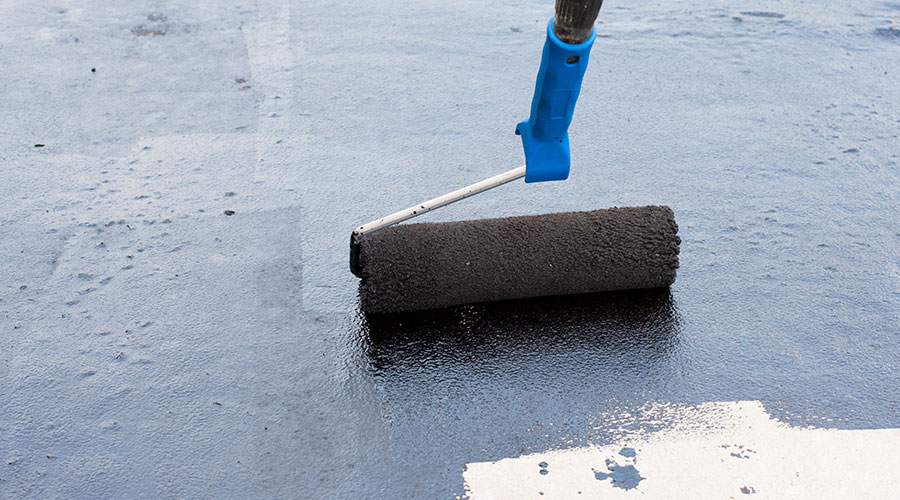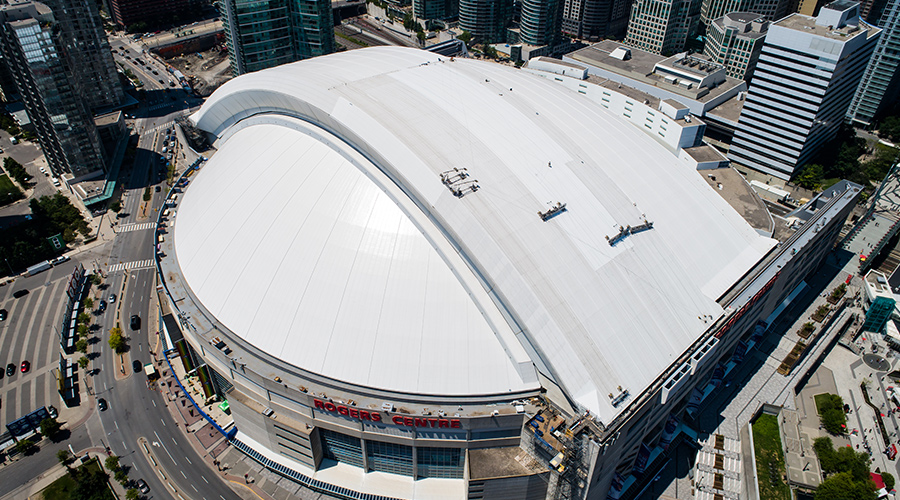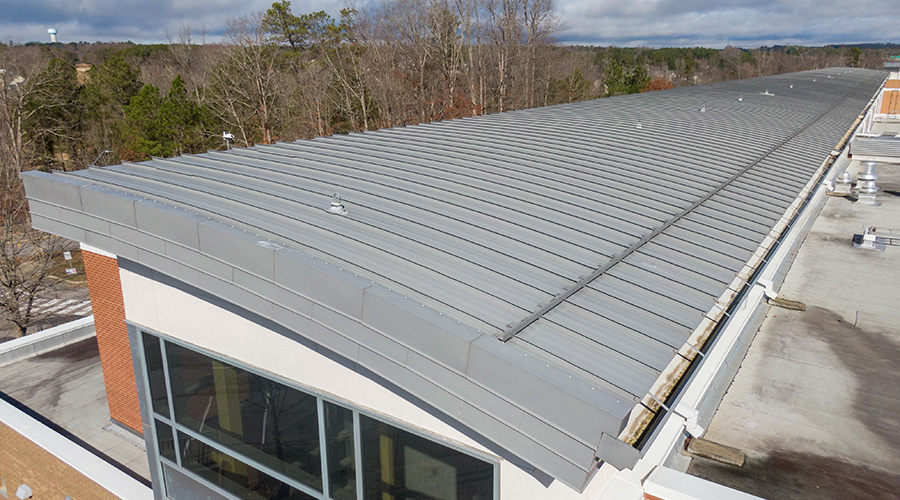The Technology of Roof Inspections
Thermal imaging gives inspectors a new tool to detect small problems before they become big headaches
Roofing systems protect facilities, interior assets and operations, and occupants, and as a result, they are central components in ensuring efficient, long-term building performance. The challenge for maintenance and engineering managers is to implement or fine-tune inspection and repair programs targeting the specific needs of roofs to make sure roofs operate as designed.
Managers can realize several benefits from putting information derived from inspections to use for more effective roof management. Information from a thorough, accurate roof evaluation enables technicians to stop existing leaks and avoid additional damage to and interruption of operations.
Inspections also can help managers direct limited resources to where they will achieve the greatest benefit, as well as help them anticipate future needs and reduce potential for unplanned expenditures. Finally, they can lower the life-cycle cost of the roof through longer service life, fewer leaks, and planned replacement.
An essential element in making these programs successful is thermal-imaging technology, which can give technicians a clearer picture of hidden problems that can lead to major damage and costs.
Roof Road Map
A roof’s service life depends initially on the original product used, the appropriateness of design and material selection, and the quality of installation. The best time to start a roof-management program is during the design and installation of a new roof system. Keeping accurate documentation of roof design and installation can be instrumental in determining the required corrective action for a noted deficiency.
But such a strategy is not always practical for larger facilities, since most have multiple roofs of varying types, ages and conditions. On these facilities, a roof-management program can have its greatest impact, and managers should implement it proactively, regardless of the roofs’ current ages and conditions. Managers need to review any known documentation or history before scheduling an inspection and incorporate it into the evaluation.
In addition to knowing the roof’s history, understanding the current condition is essential for effective roof management. Conducting roof inspections or surveys can reveal a roof’s current condition. Whether an in-house technician or an outside consultant conducts the inspection depends on the technical competence and availability of in-house resources.
The person performing visual roof surveys should be familiar with the roof’s design, installation and repair, as well as types of failure specific to the roof. It also is important to be familiar with the facility operations to understand the way they can affect the performance of specific roof systems.
Components of the roof survey include:
• locating and investigating current and previous leaks
• examining the roof field and roof components, including flashings, sheet metal, and drainage
• examining adjacent conditions, such as walls and rooftop equipment
• evaluating observed deficiencies that might affect the roof’s long-term performance
• documenting deficiencies requiring corrective action
• developing long-range preventive maintenance needs.
Documentation should consist of a written report — possibly including a checklist of the deficiencies recommended for repairs — photographs, and notes on a roof plan. The roof plan should be accurate in the locations of walls, rooftop equipment and drains to provide the necessary data for performing repairs.
Moisture Matters
Managers have several tools at their disposal to assist with the investigation of conditions not readily observable during the visual roof inspection. Diagnostic testing includes moisture surveys, wind-uplift testing, and fastener-pullout testing. Of these, technicians often use moisture surveys during roof inspections. Wind-uplift testing and fastener-pullout testing occur more often in the design of roof recovery and replacement.
Moisture entrapped in a roof assembly can have numerous effects, including:
• structural deck deterioration
• significant additional weight, which results in deck deflection and infringement on the roof structure’s live-load capacity
• reduced attachment of the roof to the building by rusting fasteners on mechanically attached systems, or deterioration of the adhesives and insulation on adhered and hot-mopped roof systems
• deterioration of the roof membrane due to blistering or freeze/thaw damage
• increased risk of mold growth
• reduced insulation R-value and thermal efficiency, resulting in increased energy costs
• reduced service life if not addressed, resulting in premature roof replacement.
The purpose of a moisture survey is to help make informed planning decisions to reduce the roofing life-cycle costs. It can provide early detection of wet areas, allowing removal or repair to avoid premature reroofing. Managers also can use it to prioritize expenditures.
A survey also can allow more accurate prediction of anticipated service life and replacement date, as well as provide critical information to determine whether a tear-off or recover is the best option when planning for replacement.
Survey results also can aid managers in deciding whether to repair or replace a roof, as well as determine quantity and location of wet areas. And they can allow technicians to locate wet areas for removal prior to recovering and help them pinpoint leak sources to perform repairs.
Types of Tests
Moisture survey methods fall into two types: non-destructive and destructive.
Non-destructive testing includes infrared thermography, electrical capacitance, and nuclear detection. Although these methods are considered non-destructive, core sampling or a moisture probe is necessary to verify readings in isolated locations.
Destructive testing includes core samples, moisture probes, and gravimetric analyses. As with any tool, each of these methods has advantages and disadvantages that determine their appropriate uses.
Of the methods considered non-destructive, infrared thermography has advantages over the others, making it the more frequently used method. Infrared scanning allows technicians to sample the entire roof, rather than possibly only 2 percent of the roof area when using a 10-foot-square grid pattern required for individual tests when using other methods.
With infrared thermography, boundaries are easier to define accurately, and its overall cost is generally lower than nuclear or capacitance testing. In some cases, managers also call for aerial surveys, which can scan large facilities efficiently.
The infrared camera scans a roof at night to detect variations in rooftop temperature. Wet insulation, which shows up as bright areas through the camera, absorbs solar energy during the day and radiates the heat back into the night sky. Wet insulation also can allow interior heat loss during the winter.
Infrared results also can be weather-dependent, based on wind — which causes the roof to cool rapidly — temperature, and solar gain. A dry roof surface also is essential.
The best results typically occur on cool, clear, calm nights following clear, sunny days. The scanning process usually uses a hand-held camera, although technicians also can use a hand-held camera to follow up on hot areas detected by aerial infrared scanning of large facilities.
After locating a thermal anomaly, technicians mark the boundaries on the roof with spray paint. They then can verify findings by taking core samples or moisture-probe readings. Technicians also should measure and document on the roof plan the boundaries of the areas verified as wet.
Since an infrared camera reads temperature differences rather than moisture differences directly, it is important to be familiar with all roof components, from the roof surface to the interior air space. Insulation types that scan well because they absorb water are perlite, wood fiber or fiberboard, and fiberglass.
Insulation types with better moisture resistance that are more challenging — because they do not readily absorb water — include extruded polystyrene, urethane foam, and isocyanurate foam. Also, lightweight concrete insulating fills do not scan well.
It also is important to be familiar with the facility operations under each roof area. An area might appear warm because of conditions other than wet insulation, such as hot areas around rooftop and interior mechanical equipment, heaters under the roof deck, and variances in the thickness of built-up asphalt roofs or gravel surfacing.
Focus on Frequency
The frequency of roof inspections depends on several factors, including the age and condition of the roof, weather conditions, environmental influences that include those generated by facility operations, and rooftop traffic to service units. On newer roofs, technicians should complete surveys before the contractor’s or manufacturer’s warranty expires.
Managers need to allow enough time to review deficiencies detected during the inspection. Technicians also should complete the first moisture scan as part of the survey conducted before the warranty expiration.
The visual survey and moisture scans give managers valuable data, but this information is based on conditions at the time of the survey. One key to a successful roof-management program is to schedule repairs soon after the survey. Delays in corrective action mean that even small, isolated deficiencies can grow into expensive, difficult repairs.
Mike Wilson is a senior consultant with Benchmark — www.benchmark-inc.com — a national roof consulting firm in Cedar Rapids, Iowa.
Related Topics:











